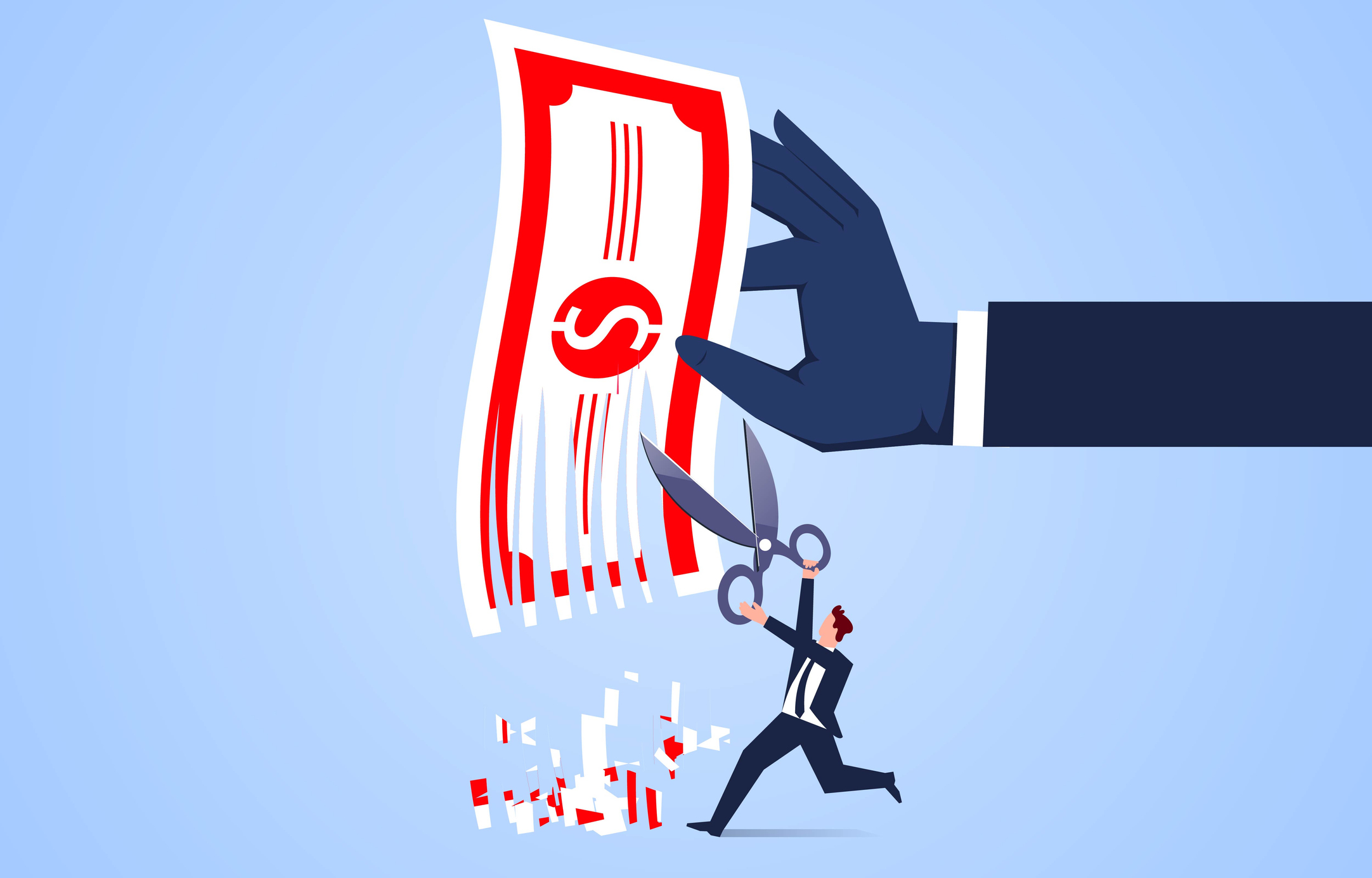Spending Cuts Could Trigger Deeper Slowdown: Kiplinger Economic Forecasts
There is a risk the debt limit could be hit as soon as June


Our highly experienced Kiplinger Letter team assesses the state of the U.S. economy and the events affecting it, producing regular forecasts on the outlook for the economy, to help you make better financial decisions.
Our experienced Kiplinger Letter team will update you on all the important developments (Get a free issue of The Kiplinger Letter or subscribe). You will always get updates first by subscribing, but we will publish many (but not all) of the forecasts a few days afterward online. Here’s the latest…
If spending cuts are required to resolve the looming debt limit crisis, they will likely be moderate and/or spread out over time, so as not to ding current GDP growth too much. However, any cuts that take place at a time when the economy is slowing will likely make that slowdown a little worse.

Sign up for Kiplinger’s Free E-Newsletters
Profit and prosper with the best of expert advice on investing, taxes, retirement, personal finance and more - straight to your e-mail.
Profit and prosper with the best of expert advice - straight to your e-mail.
There is precedent for this sort of outcome. The 2011 debt limit fight between President Barack Obama and House Republicans resulted in $917 billion in cuts spread over 10 years, which reduced the immediate impact on the economy.
Lack of resolution to the debt crisis
But note that the White House is determined to avoid compromise, hoping instead that fissures in the GOP eventually drive moderates to its side. With no resolution, Uncle Sam can spend only the revenue coming in from taxes and other sources, triggering even more painful automatic spending cuts.
The timing of a potential crisis depends on June 15 quarterly tax payments. These could delay the moment of truth until late July or early August if they’re good. Otherwise, the debt limit would be hit in June, per recent Treasury Department warnings.
Troubles with manufacturing
Manufacturing’s April expansion doesn’t mean the sector is out of the woods, despite a benchmark survey showing improvement in orders, production, hiring and exports.
Other parts of the survey indicate a future slowdown: Businesses think customer inventories are too high, which happens only when a downturn is coming. Manufacturer inventories and order backlogs are also contracting.
Still, it’s likely that any slowdown will be gradual, a source of frustration for the Federal Reserve, which had hoped for faster relief of price pressures.
Manufacturers face a dilemma with their suppliers. Facing parts shortages in 2021 and 2022, many had expanded the number of suppliers they worked with to hedge against supply chain risk. With demand waning, they’ll face a tough choice between the hard-won diversification of their supplier bases and preserving cash.
This forecast first appeared in The Kiplinger Letter. Since 1923, the Letter has helped millions of business executives and investors profit by providing reliable forecasts on business and the economy, as well as what to expect from Washington. Get a free issue of The Kiplinger Letter or subscribe.
Read more
Get Kiplinger Today newsletter — free
Profit and prosper with the best of Kiplinger's advice on investing, taxes, retirement, personal finance and much more. Delivered daily. Enter your email in the box and click Sign Me Up.

David is both staff economist and reporter for The Kiplinger Letter, overseeing Kiplinger forecasts for the U.S. and world economies. Previously, he was senior principal economist in the Center for Forecasting and Modeling at IHS/GlobalInsight, and an economist in the Chief Economist's Office of the U.S. Department of Commerce. David has co-written weekly reports on economic conditions since 1992, and has forecasted GDP and its components since 1995, beating the Blue Chip Indicators forecasts two-thirds of the time. David is a Certified Business Economist as recognized by the National Association for Business Economics. He has two master's degrees and is ABD in economics from the University of North Carolina at Chapel Hill.
-
 Do You Want An Extra $50,000 In Your 401(k)? Delay Retiring
Do You Want An Extra $50,000 In Your 401(k)? Delay RetiringDon’t think putting off retiring for six months to a year will have a meaningful impact? Think again. See how much it can help.
-
 Ten Cheapest Places To Live in New York
Ten Cheapest Places To Live in New YorkProperty Tax If you’re planning a move in New York, here are the counties with the lowest property tax bills in the Empire State.
-
 The IRS is in Chaos
The IRS is in ChaosThe Tax Letter DOGE, departures, data agreements and more are creating havoc at the IRS.
-
 Trump's Second 100 Days
Trump's Second 100 DaysThe Kiplinger Letter President Trump's agenda faces legal and legislative roadblocks.
-
 AI’s Medical Revolution
AI’s Medical RevolutionThe Kiplinger Letter Medicine is a field ripe for finding both exciting and practical uses for AI. The tech is already being used by doctors and researchers.
-
 The Economic Impact of the US-China Trade War
The Economic Impact of the US-China Trade WarThe Letter The US-China trade war will impact US consumers and business. The decoupling process could be messy.
-
 AI Heads to Washington
AI Heads to WashingtonThe Kiplinger Letter There’s big opportunity for AI tools that analyze MRIs and other medical images. But also big challenges that clinicians and companies will have to overcome.
-
 Trump Dials Back Most Tariffs but Targets China
Trump Dials Back Most Tariffs but Targets ChinaThe Kiplinger Letter Wall Street hopes that higher tariffs on most countries are on hold for good. But the trade war between the U.S. and China is heating up.
-
 The AI Doctor Coming to Read Your Test Results
The AI Doctor Coming to Read Your Test ResultsThe Kiplinger Letter There’s big opportunity for AI tools that analyze CAT scans, MRIs and other medical images. But there are also big challenges that human clinicians and tech companies will have to overcome.
-
 The New Space Age Takes Off
The New Space Age Takes OffThe Kiplinger Letter From fast broadband to SOS texting, space has never been more embedded in peoples’ lives. The future is even more exciting for rockets, satellites and emerging space tech.